For the next few weeks I’m trying to harness the rising sap of Spring and pour my energy into getting on with the patchwork altar frontal. Deciding it would be lovely if the frontal featured embroidered flowers – both wild and domesticated – I had hoped to encourage others in the patchwork group to have a go at embroidery. This hasn’t happened, which is understandable in a small village. Throughout the winter I have embroidered flowers and these have been posted on the blog as and when they’ve been finished. Now I feel I need to make a concerted effort to gather things together, take stock and have a few meetings in which I have things for others to do which I know they can cope with. (I hadn’t realised how problematical some would find turning fabric under for the points on the diamonds or how tight a tension some sewed with, so it’s been a big learning curve for all of us).
Today I am showing North Stoke’s green altar frontal, which along with the white and purple frontals, consists of beautiful goldwork and sumptuous silkwork. Once again, the couching threads holding the gold thread in place have proved to be a weak point but, generally, considering that the green one is in use the most, this frontal has worn its 100 years pretty well.
In liturgical terms, green indicates Ordinary Time, two periods of which occur in the church calendar: the comparatively short time between Candlemas and Ash Wednesday and an extended period after Pentecost. Somewhat confusingly ‘ordinary’ as used here has nothing to do with common or what you’d revert to in between special feasts, but rather it refers to being numbered – an ordinal number is an adjective like first, second, etc and so Ordinary Time is counted time e.g. the First Sunday after Pentecost. Counted time after Pentecost begins with the First Sunday after Pentecost, which is also Trinity Sunday and ends with the last Sunday before the beginning of Advent which celebrates Christ the King.
Ordinary Time allows for more uninterrupted reading of scripture in sequence, for the exploration of other themes, such as creation or the environment and for creative response to things like the saints’ days that appear at this time.
For details of North Stoke’s other frontals:
For other posts on liturgical colours and stoles:

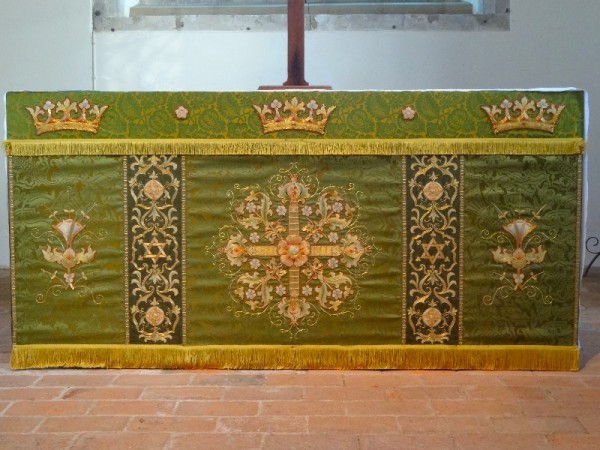
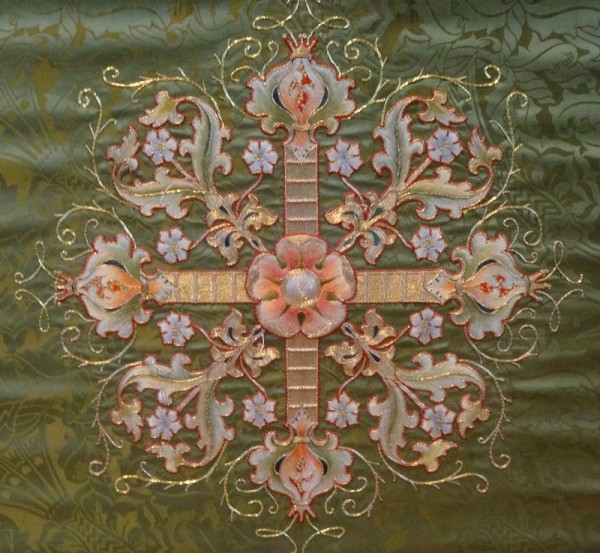
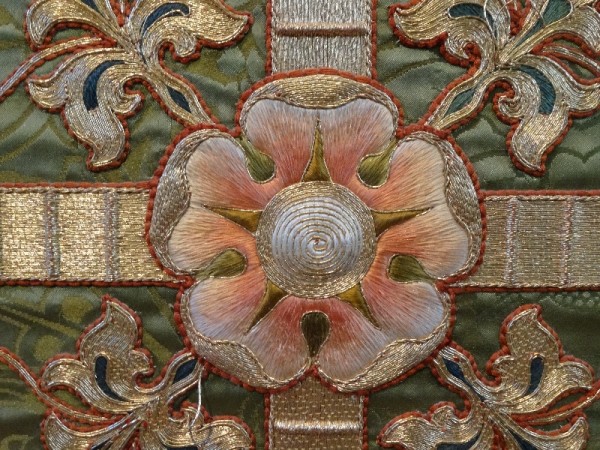
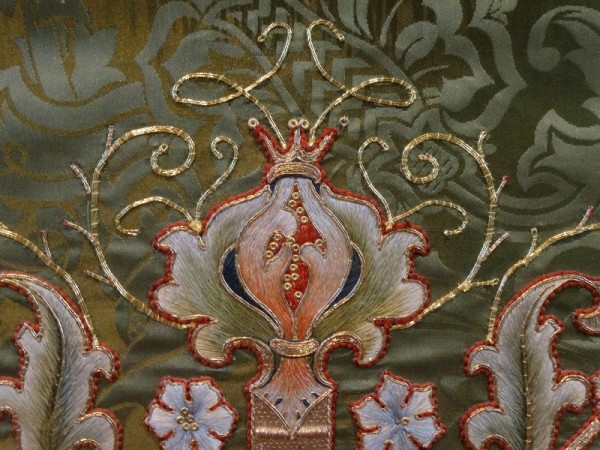
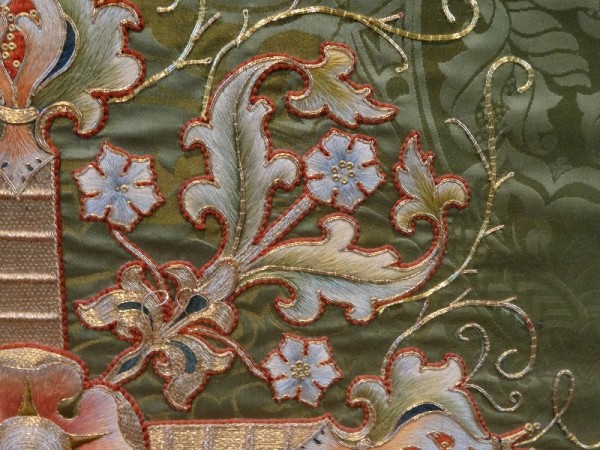
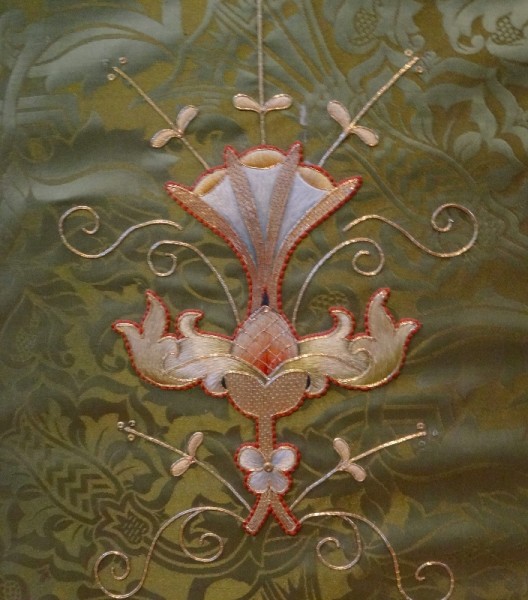
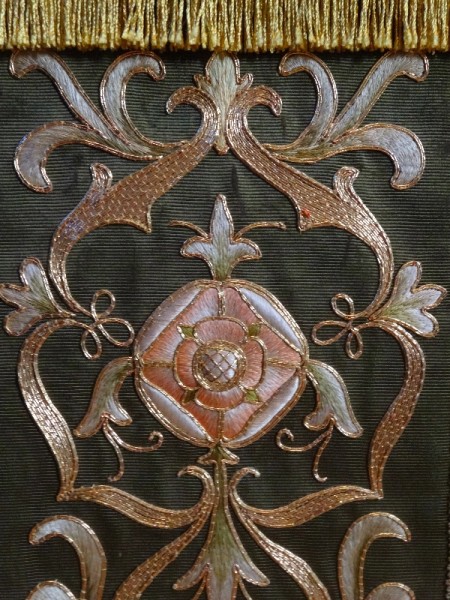
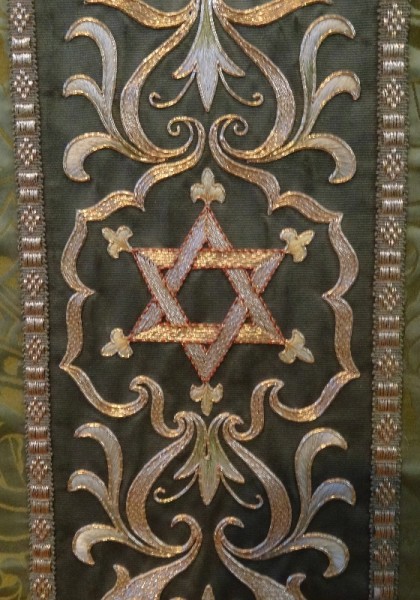
8 Comments
I wondered if you know of this:
http://www.facilececile.com
and particularly this post – so intricate
http://www.facilececile.com/archives/2012/08/25/24927285.html
I do look at facilececile from time to time. Her work is lovely.
I didn’t know that about Ordinary Time – I always assumed it meant “not something else” (not a feast, not a period of repentence….).
You have my sympathy over the patchwork one and working with others. It’s very hard to assess other people’s capabilities accurately.
I only got to grips with ‘Ordinary Time’ because of trying to get liturgical colours straight for the blog.
When sewing as a group, sometimes you just have to do a bit of undoing later on and redoing it yourself.
Hello Mary – A lovely green springlike post today… the patchwork frontal will come to blossom how can it not? We are moving into autumn over here and yes, it did rain, just a little last week… and the bush sent out that lovely herby scent that it alone knows how to do. No more rain for a while though so its back to watering. I have been creative too, granddaughter no 1 (5 years) was here for Saturday night with a fantastic Natalie Lete french paintbox, so, as she wielded enormous dragonflies with curly antennae for her Mum I painted little flowers dancing across the old computer paper that we use. A very peaceful and happy few hours was spent. Now I think I must have a french paintbox too! Very best…
We’re both sitting on the cusp of the change of seasons – I always think how ready we are for what comes next, in our case we have had some sun but really need the warmth as coughs and colds are hanging around, easy to pick up and difficult to shake off once you’ve got them.
The Natalie Lete paintbox sounds lovely (I’ve just done a search and had a look at it) – her painting on the lid must have been very inspirational as your granddaughter’s work sounds like something she herself would produce. Lovely for you and her to sit and paint together.
Thank you for posting the detailed photos of this altar frontal, as well as the white and purple altar frontal. I have admired this frontal from photos seen on Flickr years ago, and longed to see closeup photos.
The work is lovely. One can only wonder if our own work will last that long, or be valued and cared for as much.
I am glad I found your site on Emily’s cupboard. Thanks for the great posts!
Carrie, thank you for leaving a comment. I have read all through your blog and keep intending to leave a comment of appreciation for your very interesting and informative posts.
Interesting that there are some Flickr photos of the frontal out there.
The silkwork has lasted the century remarkably well but it’s the couching of the gold threads that is the weak element. All that heaving the frontals in and out of their storage chest has eventually taken its toll, though I suspect once mended they could last at least another 100 years. The C12 church is a stone’s throw from the Thames and although not actually suffering from damp, there is dampness in the air and the miracle is that the frontals have not suffered more deterioration. It is difficult to know how to improve the conditions in which they are kept. The smaller pieces of goldwork – pulpit falls, stoles, etc. (which I shall post photos of later) have not survived as well as the frontals as they have just languished in a drawer. For the time being I have brought these home. Mice have had a little nibble of the pulpit falls and the stoles, (both of which are just as good as the frontals) are not used as priests have their own. It is a shame that few people realise the quality of this embroidery.